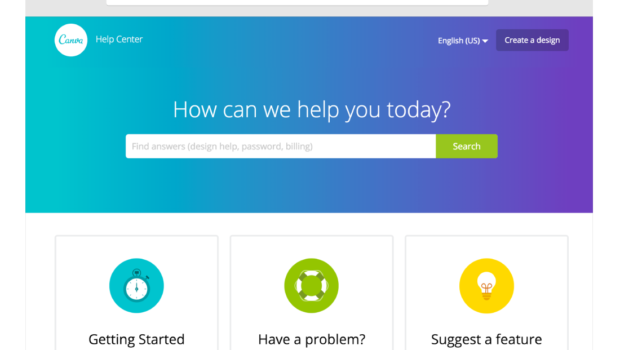5 Easy Hacks on Making your Internal Knowledge Base More Searchable
Whether you have an organisation operating on a large scale or small scale, one thing that can bring a sea change in your business dynamics is how you manage the information internally.
You have scores of products and services and there are n number of facts and figures related to them,your company has vast history, plus, there are many rules, regulations and policies of your firm, that have evolved over a period of time. To add to this, you also have a long list of partners and managers who are heading different divisions of your organisation. The pool of information is never-ending.
What happens when you don’t manage your firm’s information in the right way?
It hampers productivity, to say the least. How?
- Employees won’t have a common platform to search for information they need. Most of their time will be spent on struggling to find relevant data – the time that can be utilized in a judicious way by working on meaningful tasks.
- Deadlines will be missed, targets will remain incomplete
- Employee satisfaction will go for a toss
- Quality of work will be compromised as employees won’t have the right information with them to go ahead with their respective tasks.
How do you tackle such a situation?
All these problems have one single solution – a highly searchable internal knowledge base.
Having an online documentation software is a blessing in disguise. A common repository comprising information related to your products, services and your firm as a whole can enhance the productivity of your employees and completely transform the way your business functions.
And it’s proven.
According to a research conducted by McKinsey, if companies embed social technologies, the productivity of interaction workers can mount up by 20% – 25%.
But for this to happen, a plain and simple internal knowledge base won’t suffice. What you need is a platform that has the right features and is searchable to make navigating through humongous amount of data, an easy-breezy affair.
In case you already have an internal knowledge base, it’s time you incorporate a few changes that will make the platform searchable, engaging and interesting for users to read and help them get what they want in a jiffy.
A glimpse at some of the tips that can change the look and feel of your online knowledge base software.
- Include relevant keywords – While creating content for internal wikis, documentation or user guides, it’s paramount that you include the most appropriate keywords for the convenience of users. When readers search for something, they should get the best results, on the basis of the keywords you have incorporated in the articles.
Create keywords that are in sync with what your users might type to search for something specific, like – how does XYZ product functions. Don’t just swamp the write-up with keywords at unnecessary places. Make your content SEO friendly so that readers can hunt for the information quickly. - Controlled access – Knowledge base gives you the power to grant different access roles to different users as per their requirements. Conditional content rules embedded in a knowledge base tool help you provide controlled access to users, and keep a track of who can see and edit what in a document. For instance,if the amount of information in your knowledge base is huge, it’s bound to create confusion.
To avoid this, you can give different access roles to teams, so that they can get information that’s relevant to their department. It saves a lot of time and also improves search efficiency. - Keep up the interest quotient – No matter how relevant your online document is, it doesn’t appeal to readers, if it’s dull and drab. Hence, make it a point to embed images, graphics, videos, etc. to keep users glued to their screens.
Use different fonts and themes that are in consonance with the context of your content, to make readers feel connected. You can also use infographics to present content differently. They look attractive and convey the meaning effectively. - Compatibility – It’s important that you create internal help center in such a way that it is accessible from any device or browser. Your employees should be able to access information from anywhere and at anytime of the day, on their devices. Searching for what they need won’t be a tedious task if your knowledge base is flexible enough.
- Include links – You can make the content more searchable by including links of suitable articles that are specific to what a user is looking for. The likelihood of reaching to the right answer increases with such plethora of relevant information.
These are just few of the tricks you can use to make your internal help document searchable and interesting to read. The benefits you derive out of it are countless.
Firstly, for employees, it avoids misunderstanding. They get information handy at any time of the day. New recruits are able to understand the functionalities of your firm in a better way by gaining knowledge through the internal knowledge base available to them. Hence, you don’t have to spend money and time on organising trainings for them, which would have been the case otherwise.
Also, teams sitting out of different geographical locations can work collaboratively with each other by sharing and editing content on a single platform.
One internal knowledge base has the prowess to keep your employees united and on the same page and has a significant role to play in keeping readers abreast of changes in your products and services and also what’s happening in your organisation.
While your employees are investing their time, energy and grey matter to make that product work or deliver the best services to customers, it’s up to you to support them in this ride.
A common platform that is highly searchable is in itself a boon, as it relieves employees of the task of going from pillar to post to get the right information.
Let the magic of your internal knowledge base begin.
Author Bio:
Robin is a Technical Support Executive. He is an expert in knowledge management and various Knowledge base tools. Currently, he is a resident knowledge management expert at ProProfs. In his free time, Robin enjoys reading and traveling.















